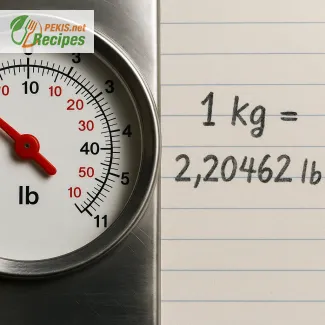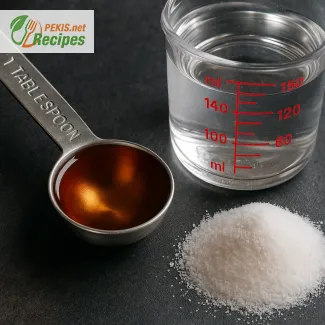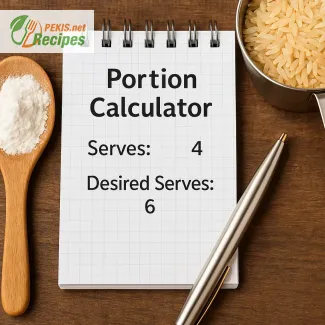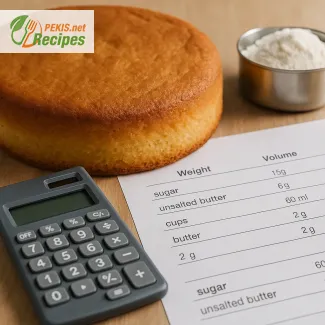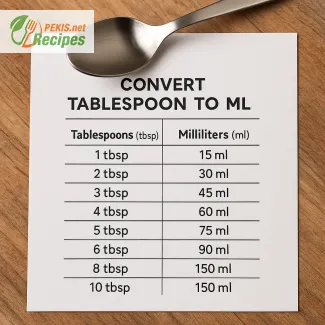
How many ml in a tablespoon? Complete kitchen measurement guide
Understanding tablespoon to ml conversion for accurate cooking
Knowing how to convert tablespoons to milliliters can make or break a recipe—especially when precision is key. Whether you're a passionate home cook, a professional chef, or someone following a global recipe online, getting these conversions right ensures consistent texture, flavor, and outcome. While many kitchen measurements rely on approximation, the tablespoon (abbreviated as tbsp) to milliliter (ml) conversion is one that deserves special attention. It's one of the most commonly searched kitchen unit conversions, especially in regions where metric and imperial units overlap.
In this article, you'll discover a practical approach to converting tablespoons to ml, why accuracy matters in cooking, how measurements differ across countries, and how to adapt this knowledge to everyday kitchen tasks. The goal? No more guessing, no more failed bakes, and no more asking “how many ml are in a tablespoon?” ever again.
What is a tablespoon and why is it tricky to convert?
The term tablespoon may sound universal, but it’s not. A US tablespoon equals 14.79 ml, whereas a UK (imperial) tablespoon equals 15 ml, and in Australia, it’s even more confusing: one tablespoon equals 20 ml. That’s a significant difference when you're doubling or tripling ingredients, particularly in baking where chemical reactions depend on exact quantities.
In many recipes, tablespoon sizes are not specified, and this can lead to incorrect proportions, especially when mixing wet and dry ingredients. That's why it's important to always ask: where does the recipe come from? If it’s from the US, you should use the US tablespoon, which is just under 15 ml. If it's from Europe, it's usually safe to assume 15 ml.
Standard conversion: tablespoon to milliliters
To help make things clear, here’s the standard conversion you should remember:
- 1 tablespoon (US) = 14.79 ml
- 1 tablespoon (metric/UK) = 15 ml
- 1 tablespoon (Australia) = 20 ml
Most modern digital recipes and kitchen apps round this off to:
- 1 tbsp ≈ 15 ml
This approximation is safe to use for general cooking. However, if you're following a precision-based recipe, like making macarons or emulsions, even a few milliliters off can alter the result.
Why converting tablespoons to ml matters
Imagine you’re baking a delicate custard that calls for 3 tablespoons of cream. If you’re using Australian tablespoons, that’s 60 ml. But if you’re following a US recipe and assume 1 tbsp = 20 ml, you’ll be adding too much liquid—a mistake that can make your custard collapse.
This becomes even more critical when dealing with intense ingredients like vinegar, lemon juice, soy sauce, or alcohol. Just one tablespoon too much can throw off the acidity, sweetness, or alcohol balance in a dish.
Regional differences in tablespoon measurement
Let’s break it down by region to see how the tablespoon definition changes:
- United States: 1 tablespoon = 14.79 ml
- United Kingdom: 1 tablespoon = 15 ml (in modern metric system)
- European Union: Standardized at 15 ml
- Australia: 1 tablespoon = 20 ml
- Canada: Can be either 15 ml or 20 ml, depending on the source
This means you always need to check the origin of the recipe to avoid confusion. If you're using spoons from your own kitchen drawer, it's safest to use a measuring spoon set labeled in ml rather than relying on cutlery.
How to measure a tablespoon without a measuring spoon
If you don’t have a tablespoon on hand, you can still get close using other standard measurements:
- 1 tablespoon ≈ 3 teaspoons
- 1 tablespoon ≈ 1/2 fluid ounce (US)
- 1 tablespoon ≈ 1/16 cup (US)
While these are handy hacks, they’re only accurate when using standardized measuring tools. Using a regular spoon from the drawer? The sizes vary wildly, often between 7 and 13 ml, so they’re unreliable for accurate conversions.
Visual conversion table: tablespoon to ml
To make quick conversions easy in your kitchen, here’s a reference you can memorize or print:
| Tablespoons (tbsp) | Milliliters (ml) |
|---|---|
| 1 tbsp | 15 ml |
| 2 tbsp | 30 ml |
| 3 tbsp | 45 ml |
| 4 tbsp | 60 ml |
| 5 tbsp | 75 ml |
| 6 tbsp | 90 ml |
| 8 tbsp | 120 ml |
| 10 tbsp | 150 ml |
These values are based on the metric tablespoon (15 ml) which is widely accepted in Europe and is also a safe average for US recipes when high precision isn't required.
When should you be exact vs. approximate?
Not all cooking requires laser-sharp measurements. For soups, stews, and marinades, you can afford a little wiggle room. But when you're working with baking recipes, sauces, or dietary-specific dishes (e.g. low-sodium, diabetic-friendly), you must aim for precise conversions.
Recipes that use chemical leaveners (like baking powder or baking soda), or exact ratios of fat to flour, are especially sensitive to over- or under-measuring. A few ml more or less could affect the rise, texture, or flavor.
Tools that help ensure accurate conversions
Investing in a high-quality set of measuring spoons and cups, preferably with metric and imperial units, is one of the best things you can do for consistent cooking. Many modern sets even include volume indicators in ml on the handle, eliminating guesswork.
You can also use kitchen scales that measure in ml for liquid ingredients—especially helpful for oils, dairy, broths, and syrups, which are hard to measure cleanly with spoons.
For a tech-savvy kitchen, recipe apps and digital assistants like smart scales can auto-convert tablespoons to ml based on your region and recipe source.
Frequently asked questions about tablespoon to ml
Is 1 tablespoon always 15 ml?
Not always. While 15 ml is the global metric standard, US tablespoons are slightly smaller at 14.79 ml, and Australian tablespoons are larger at 20 ml.
Why do some recipes give both tablespoons and ml?
To avoid confusion and support both metric and imperial systems. This is especially common in international cookbooks and blogs.
Can I use a regular spoon instead of a measuring spoon?
You can—but it’s not recommended. Regular spoons vary too much in size, so they may result in inaccurate ingredient quantities.
Is there a difference between a dessert spoon and a tablespoon?
Yes. A dessert spoon is usually 10 ml, while a tablespoon is 15 ml. They are not interchangeable in cooking.
How many ml is 2 tablespoons?
If using metric: 2 tbsp = 30 ml
If using US: 2 tbsp = 29.57 ml
How many tablespoons is 100 ml?
Using metric tablespoons: 100 ml = 6 tablespoons + 2 teaspoons
Tablespoon to ml mastery means better food
Once you master the art of converting tablespoons to milliliters, your kitchen becomes more international, flexible, and consistent. Whether you’re following a grandma’s handwritten recipe, a French patisserie formula, or a viral TikTok dish, you’ll always be one step ahead when you measure with precision. It’s a simple habit that leads to better food, fewer mistakes, and more confidence every time you cook.
